While this isn’t the first time British jets have landed on the aircraft carrier, it is the first time that the famous Dambusters have touched down onboard the ship.
The Ministry of Defence say that 617 Squadron – famously known as the Dambusters – have joined HMS Queen Elizabeth at sea.
According to the Royal Navy, the aim is to demonstrate that the jets can successfully defend the aircraft carrier by delivering combat air patrols – launching from the ship to conduct strike missions against a target – and being ready to take off at short notice.
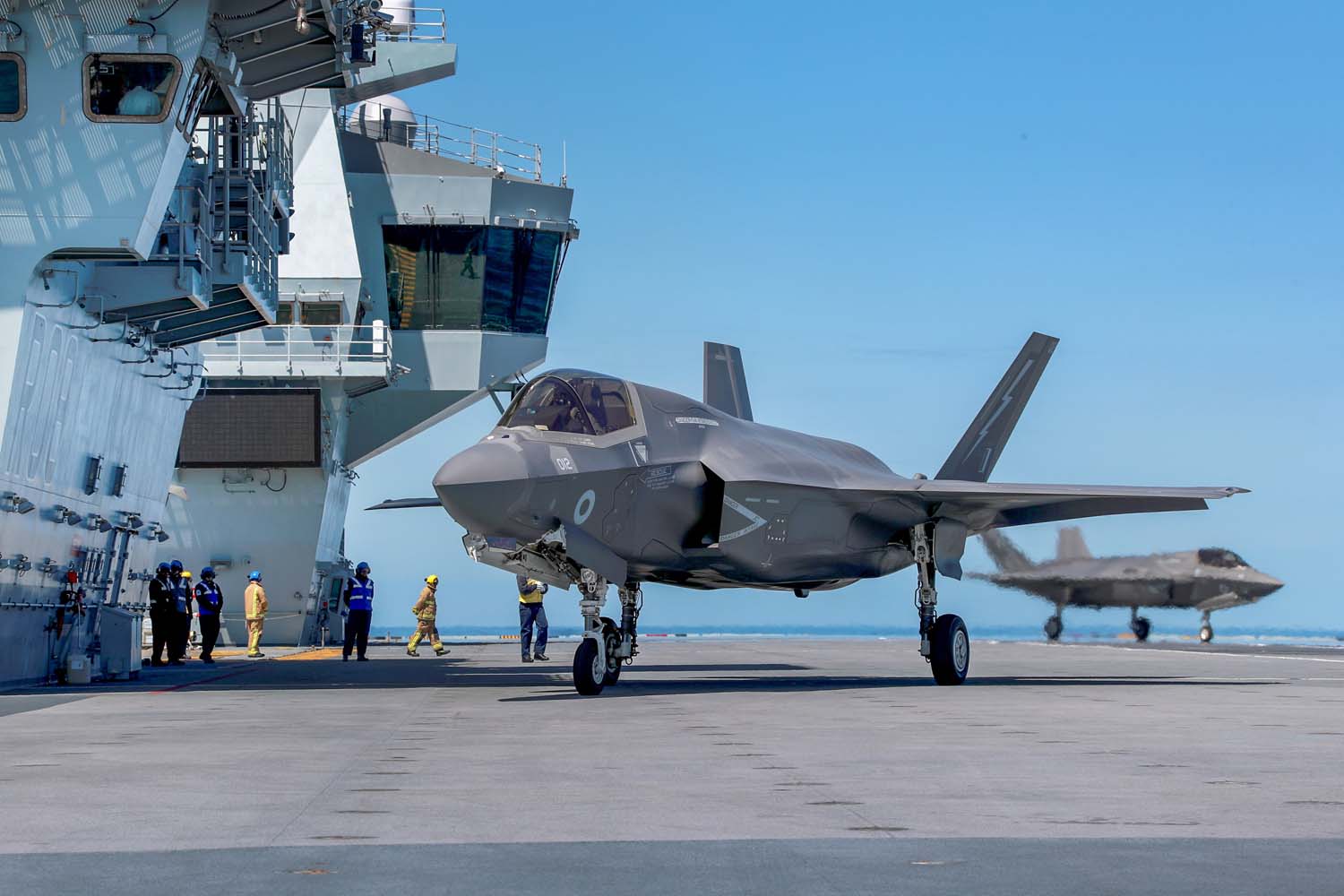
“After the initial qualification period, 617 Squadron will test their ability to work with Portsmouth-based HMS Queen Elizabeth and Merlin helicopters of Culdrose-based 820 Naval Air Squadron by conducting a number of complex training missions. This is all in preparation for their second embarkation later in the year when the squadron will join the carrier and her task group for a large multinational training exercise with US, European and NATO partners.
 The Royal Navy is transforming into a force centred around carrier strike – supporting the ships as they conduct carrier strike missions, enforce no-fly zones, deploy Royal Marine Commandos, deliver humanitarian aid, and build international partnerships with our allies.”
The Royal Navy is transforming into a force centred around carrier strike – supporting the ships as they conduct carrier strike missions, enforce no-fly zones, deploy Royal Marine Commandos, deliver humanitarian aid, and build international partnerships with our allies.”

Commander Mark Sparrow, the Commanding Officer of 617 Squadron, said in a Royal Navy news release:
“We are excited to be on board the carrier and we have been training hard to be here. This is the first time the ship’s operational squadron has embarked and worked together. The F-35 brings next generation capability to UK Defence through its ability to find, destroy or avoid enemy air defences and enemy aircraft whilst gathering intelligence data.”

Commander Ed Phillips is the Commander Air on board HMS Queen Elizabeth. He said:
“Today is a significant day for HMS Queen Elizabeth on the road to delivering carrier strike operations for the Royal Navy. We are at the heart of a world-leading capability for the UK and will soon have on our decks two squadrons of F-35s – from the UK and US – plus the protection of a strike group made up of destroyers, frigates and support ships.”
HMS Queen Elizabeth will now enter an intense period of flying having just successfully completed four weeks of basic sea training before returning to Portsmouth later this month.


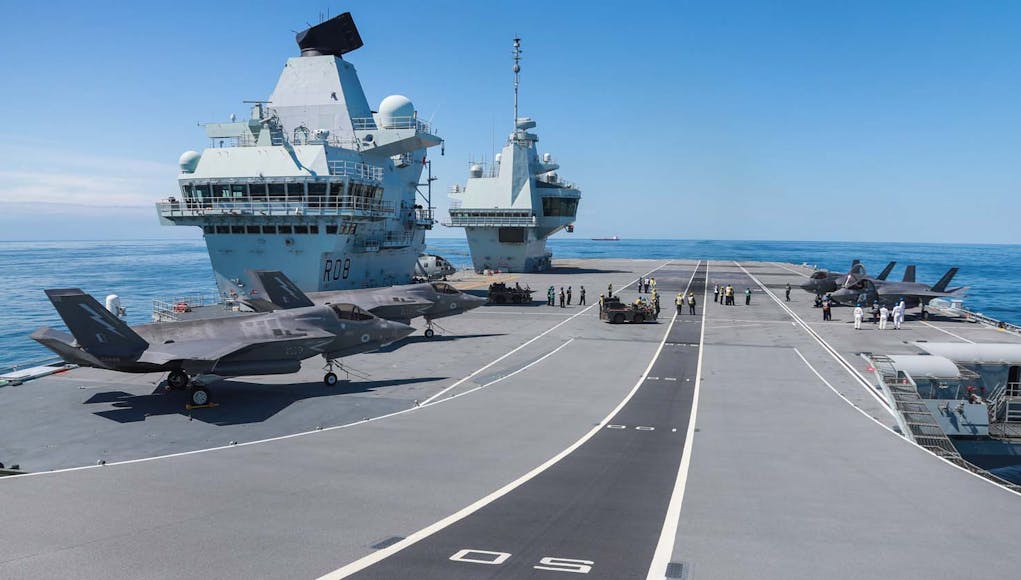
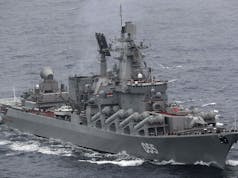
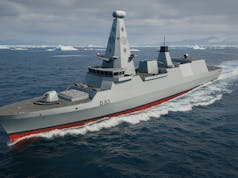

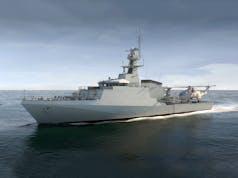

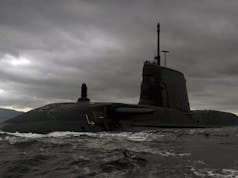
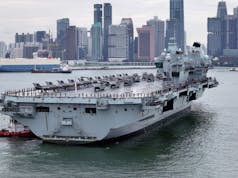
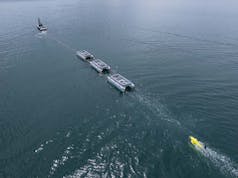
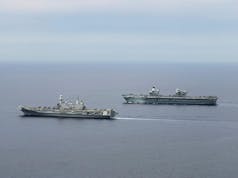


Great stuff.
But what are the F35’s actually carrying to carry out CAP ?
I don’t think there is anything. We are told that sensors, comms and electronics are most important but surely yu have to be able to attack with something.
Morning Danielle, Nicholas,
According to this article in Defence News (last 2 paragrpahs) UK F-35’s carry ASRAAM, AMRAAM and Paveway with plans to integrate Meteor, Paveway 4 and SPEAR Cap3.
https://www.defensenews.com/global/europe/2019/01/10/uk-defense-chief-f-35-jets-are-ready-for-operations/
I can’t remember the time table for weapons integration but somewhere on here someone gave a very good summary of the integration program so I think it is online somewhere.
Work has already started.
https://www.baesystems.com/en/article/work-starts-integrating-next-generation-meteor-and-spear-onto-uk-f-35-fleet
That was me…here’s the current position (updated since last time), with some speculation and gaps that need to be closed. it’s a long post…
UK F-35B armament is a little confused at present as a number of capabilities are being developed concurrent with F-35B development and deployment.The truth is that the UK’s F-35B must be regarded as under-armed for anything but air to air or SEAD/DEAD unless more munitions are integrated/purchased and fielded.
The obvious point is that the UK’s F-35B won’t have ‘full’ combat capability until Blk.4 arrives c2026-28. That is now a little beyond the Carrier programmes goals though (That is the time frame when both carriers will be ready and worked up with Crowsnest AEW deployed, F-35B Blk.IV delays have meant it falling out of sync).
The second obvious point is that it is clear that the UK will now only buy US air weapons to fill small gaps or where no alternative exists. This is for partly national sovereignty, industrial and political reasons. Security of supply, ITAR and export opportunities also come in to play. But a big reason is everyone remembers the US shafting the UK over ASRAAM and doesn’t want to be in that position again.
It’s easiest to split the F-35 weapons position into time periods:
Present
ASRAAM – AIM-132 – Cleared for outer pylon, one of the best WVR missiles out there, far faster and longer ranged than other WVR missiles (60km+ range). AIM-9X uses the same seeker head. Asraam isn’t in wide NATO service. Currently used by UK, Saudi, Australia and India. Expensive…
AMRAAM C-5 – Currently in UK service, main UK medium range missile, being superceded on T2 and T3 Typhoon by Meteor at the moment. T1 Typhoons will not get Meteor however so need AMRAAM until they retire c2030. C-5 will need a re-life if they’re to continue in service beyond c2023, this was being discussed recently.
Paveway IV – UK built. Advanced LGB with GPS/INS onboard (can use satellite guidance only like JDAM). 500lb only. Standard UK air to ground munition. Not cheap by any stretch.
And errr…that’s it…
c2021
AMRAAM D – A limited number of AMRAAM D (c120-200) have been procured to cover the arrival of Meteor on F-35 and for Tranche 1 Typhoon’s (which cannot carry Meteor). It’s unclear if these will replace the C-5’s, which need a re-life, or be in addition to them.
c2026-28
With F-35 Blk.4 arriving the following weapons get added:
ASRAAM CSP – New production ASRAAM with new seeker and other upgrades from the CAMM programme (now known as Sea/Land Ceptor). The UK MoD was looking to re-life the ASRAAM stockpile but realised it would be just as cheap to buy new, upgraded missiles. This should be the most capable WVR missile out there, bar none. (n.b. CSP stands for Capability Sustainment Programme)
Meteor – Long Range AAM, already in active service on T2 and T3 Typhoons. Same as standard Meteor missile but with different fins to fit into F-35B weapon bay. Fins are fitted by armourers when loading the missile, so the main part of the missile remains the same. At least 500 are being procured.
Paveway IV Penetrator – Looks the same as a standard Paveway IV but has a penetrating warhead to deal with hardened and buried targets.
MBDA Spear – Mini-cruise missile >120km range. US equivalent is the unpowered, shorter ranged (but larger warhead) SBD2 Stormbreaker. Spear is not called SPEAR 3, that is the MoD programme name.
Beyond 2026-28
Meteor AESA – The UK is working with Japan on the JNAAM programme to add an AESA radar (and possibly IIR) onto Meteor. This could arrive at the same time as Blk.4 so could actually be the variant on the F-35 fleet.
Spear EW – Under development at present, could be available in 2026, easy integration as same form factor as Spear. Will provide a similar capability as MALD-J, but with potentially longer range. A gamechanger.
SpearGlide – Under development at present. Un-powered Spear with larger warhead, competitor to SBD 2 StormBreaker, easy integration as exactly the same shape, sensors and weight as Spear.
FCASW – UK/France replacement for Storm Shadow/SCALP, Harpoon and Exocet. Expected c2030-2035. Will likely be 2 types of missiles. A subsonic stealthy missile and a supersonic long range missile (which will also be able to engage high value air targets like AAR and AWACS at extreme range i.e. 500 miles+)
Closing the obvious gaps…(not just for F-35B either, Typhoon could do with some of them..)
Gun Pod – As confirmed here, the UK is not getting the 25mm external gun pod. This is a mistake. The stealthy pod, made by TERMA, also has the potential to be developed for other payloads e.g. EW, E/O recon etc.
‘Cheap’ Munitions – The US has JDAM and SDB1, both comparatively inexpensive at £20k-£25k. They have also integrated US ‘dumb’ bombs. In contrast the UK’s cheapest munition is the Paveway IV at >£65k per bomb. We could really do with some cheaper precision guided munitions. A ‘cheap’ Spear variant, just GPS/INS/SAL guidance and no jet could be one solution, this would be similar to the US SDB1. A guided bomb ‘kit’ to convert ‘dumb’ munitions like JDAM would also be very useful. MBDA could knock one up in a heartbeat..
Longer Range Munitions – With the cancellation of Storm Shadow integration 10 years ago the UK F-35B lost any semblance of long range strike. FCASW could eventually plug this gap. As could JSM or LRASM (to a degree) but like FCASW at a very high cost. But there are some other solutions, some a lot cheaper. Gliding wing kits when allied to precision guided munitions can seriously extend range. A JDAM like weapon can get out to 60 miles+. But add a small jet to the wingkit and 160 miles is possible (see JDAM-ER) also see the Heavyweight Munitions below…
Heavyweight Munitions – Paveway IV at 500lb’s is the current heaviest munition for UK F-35B. On Typhoon we have Enhanced PWII and EPWIII. Neither will be used on F-35B. Both are also getting old. A simple solution is the MBDA SmartGlider Heavy, a 2,000lb class weapon. With a engine attached it could go to 300 miles like JSOW-ER. Comparatively cheap as well.
Novel Payloads – The US has JSOW which has the ability to carry other payloads, the above mentioned SmartGlider Heavy has modularity built in. The HE payload can be switched for other payloads.
High Speed Anti-Radiation Munitions – The UK is not looking to buy AARGM-ER or the related SiAW. But there could be a solution…Meteor ARM – Mentioned at this years DSEI, not sure if this is a new variant or just taking advantage of the potential of the proposed AESA seeker. Used in conjunction with Spear and Spear-EW. V. Interesting.
Anti-Ship Missiles – Interim buy of AShM – Frequently posited. If the UK did it would be the Kongsberg JSM. LRASM is unlikely to be available until later and would compete with FCASW. JSM could also work on the UK’s P-8 Poseidon fleet (if the Australian’s pay for the integration as they once were) and the UK has very close ties with Norway. Any buy would be limited in quantity. If it happened, I wouldn’t expect more than 100 to be procured. Would need to be carried externally as will not fit in the bays of an F-35B. But with a range of >300 miles in Hi-Hi-Lo that’s not a massive problem. Could also help close the longer range munition gap.
Future Weapons
Remote Carriers – MBDA proposal for FCAS and Tempest programmes, comes in 2 sizes. Could also be adapted as medium sized cruise missiles.
Other WVR missiles – MBDA recently showed off a dual mode, smaller, ASRAAM style missile and an even smaller IR WVR missile that could be mounted 2 to a rail and be dropped from an internal bay rather than rail launched like ASRAAM.
Mini- Missiles – Another MBDA proposal principally focused on Tempest. Consists of a tiny Hit-To-Kill missile to engage enemy missiles and a ground attack variant of the same for lower collateral strikes.
CAMM/Brimstone Hybrid – Has been exhibited by MBDA for the UK MoD. Would bring Brimstone capability to the outer wing pylon of F-35B very easily. Could also have an E/O seeker rather than MMW. Very interesting for the UK as it would also be surface launched from ships, Land Ceptor systems and Boxer AFV’s…also very interesting for the Navy’s who are buying Sea Ceptor.
Other Spear Variants – MBDA and the MoD have confirmed that they are looking at other variants beyond the ‘standard’, EW and Glide. A cheap, value-engineered version should be a priority, beyond that a disposable recon version with E/O payload would be useful. The ability to ‘look over the hill’ 300+ miles away could be very useful.
Hi Rudeboy,
Great piece, thank you.
I agree that the UK has many issues with its weapons capabilities, but I am encouraged that MBDA / MoD clearly have a good working relationship which in turn appears to be leading to some very interesting and innovative developments and proposals. Some of them, as you say, could be brought forward quickly.
Cheaper weapons are a definate need for low intensity situations.
Thanks again fo rthe comprehensive write up.
Cheers CR
Hi Danielle, Nicholas,
My main reply is awaiting moderation so the, hopefully, quick response is ASRAMM, AMRAAM and Paveway are currently carried by UK F-35. Need some thing to gain IOC.
Hi Daniele, I think AMRAAM is cleared for internal carriage and in our inventory?
Yes both Block C and D versions
Ah, I didn’t know we had nice shiny D ones too! I hear the block E (whenever that happens) is Raytheon’s answer to Meteor, although I’d be interested to know exactly how they can get that much performance out of such an old design.
Would be nice if someone would properly fund anti-radiation version of Meteor, and other such things…
We managed to kill two birds with one stone so to speak. The Typhoon Tranche 1s cannot use the Meteor missile only AMRAAM in the BVR role. It has been fielding the Block C version. We are purchasing a number of Block Ds for it. At the same time F35s were also being cleared for the D version. The Block C and D are the same physical size, so it’s a just a software upgrade and clearance sign-off, rather than a new risk and safety case. We will at some point in the near future be getting a modified Meteor that can be fitted in to the F35B weapon bay, until then we will be using up the stocks of the Block Cs and fitting the newer D version.
That’s handy! I do wish we’d move our Tranche 1 Typhoons on and replace with Tranche 3s, but to be honest I’d prefer we save the money and uuse it on Tempest if it’s one or the other (which it most defintitely is).
I’ve read around that the modifications to the Meteor’s fins so that they’ll fit in the F-35’s bays will negatively impact the performance; don’t suppose you know if that’s true? I’d imagine they wouldn’t publish much information one way or the other, but thought I’d ask anyway!
The change to the Meteors fins apparently has near negligible effect on performance. The fins are not attached to the missile in its storage box, but attached by the armourers prior to loading. Essentially a Meteor storage box could include both types of fins and the armourers could select whichever the platform required.
Glad to hear that!
No such thing as a AMRAAM E. There is an acceptance that the development path for AMRAAM has ended with the D. US focus has switched to the new AIM-260 (which has yet to be revealed).
Raytheon did propose what became the Amraam D to the UK as part of the FMRAAM programme that led to Meteor (it was called ERAAM), when that clearly didn’t come close to the spec. they came up with a theoretical Ramjet powered Amraam called FVRAAM. But the MoD weren’t fooled and went with Meteor.
This should tell everyone just how far behind the curve the Amraam D is from Meteor…
At DSEi last year the RAF and MBDA were talking about Meteor being used as a anti-radiation missile. It wasn’t clear if this was ‘standard’ Meteor or the forthcoming JNAAM AESA version.
That’s what you get for going too far down message boards..! It was probably some random hypothetical that someone was on.
Is the Japanese Meteor development something that the MOD is buying into, or is it justs an MBDA venture?
No idea at present. It’s UK/Japan, that’s all we know. But it makes sense that it essentially becomes a Meteor mk.2 when it arrives to keep Meteor at the top of the game.
yeah, I see what you’re saying, in the same way that Brimstone flowed into Brimstone 2
Yes, I guessed so Joe. I only asked as we all know how HMG love to put out the PR spin about how good things are, while those with some knowledge are aware of lack of weaponry and barely any ability to kill the enemy. That is, after all, the ultimate role of any armed forces.
How utterly un PC is that.
Until the PC lot currently running riot in this country remove all weapons from the military. Which to be fair has been going on for years in some areas of the political spectrum!
Yes, I know what you mean! I think that the idea of humanity marching into a peace-on-earth future on the back of equality and education for all is a fiction. That’s not to say that equality and education for all isn’t something we should aim for, it’s just that it isn’t going to bring peace on earth! Humanity has always had a competitive and violent streak, and we always will do; we’ve just been fortunate enough in the west to not have been able to push our experience of it out of our everyday lives by and large. There will always be a requiremetn for the armed forces, and it would benefit the country to make sure they’re equipped to perform their role properly.
Tribal warfare in mankind won’t vanish.
It’s why ET probably have no wish to converse with us!!
Seriously though. Agree with you.
Walk softly and carry a big stick ! The problem with building up and consequently paying for a large military is the requirement to get your money’s worth at some point, a small but extremely capable “defence” force is probably the realistic future of UK force’s.
Looks like it’s shaping up quite nicely. Once we get a 2nd operational squadron of F35s and can put 24 on the deck we’ll have a seriously powerful asset there.
Everyone loves to put down our armed forces due to their ever decreasing size but at the end of the day, once both QE and PoW are fully operational we will be one of only 2 countries that can operate a credible carrier strike force year-round. The other being the US.
Its not putting down our armed forces to question capability problems forced upon them. If we look at a carrier strike group and ignore helicopter launched weapons where is the bite? The T26 will have no anti-ship weapons and no torpedos. The T45 has no torpedos and when Harpoon goes out of service no anti-ship. And for close air support at sea what is the F35 going to carry?
good answer
Don’t think SR is referring to yourself, if that is the inference, as his remark predates. Regards
Sorry, not predate, but still not aimed specifically
Accepted. I’m letting my frustrations with underfunding get to me.
Hi Nicholas,
No, that wasn’t aimed at you sorry. Not so much even anyone on this site per se.
Hi Nicholas,
To answer your question – SPEAR 3. So quite a good capability.
As for your other points, they are definately serious cpability gaps, although I should point out that there are now some very serious question marks with regards to the effectiveness of the 12.75inch light weight torpedo on surface vessels.
The disparity in engagement range between the sonar / heavy weight torpedo combination carried on modern subs and the effective range of light weight torpedoes is such that there is considerable doubt that a surface vessel would ever get the chance to launch. ASROC or similar is probably the best way forward which might explain the strike length MK41’s on T-26…
I should say that light weight torpedoes are a last ditch defence for the rare occassion that a sub gets close and I’d suggest that last ditch defence is better than nothing, especially if there is a minimum engagement range for ASROC…
Cheers CR
I’ve said before that a natural fit for ship launched LWT is point defence against incoming antiship torpedoes. That assumption unfortunately seems to be no more than ‘on the face of it’. I gather that in the fleet situations where they are very likely to be required they are too confused by the noise of surrounding vessels – perhaps why the RN seems to have moved out of love with them.
Still, the proposed concept does seem valid; so one trusts that considerable research would be ongoing in the hope that such a missing link viz a viz short range antiair missiles is developed.
Regards
Gunbuster may be able to add more. Its been reported that the USN have taken their anti-torpedo torpedoes off their carriers, so there must be a good reason for it.
If it operates the same as our Stingray where the torpedo is given the target data before launch then is on its own after that. It’s easy to imagine how the torpedo would struggle to identify the enemy torpedo amongst a bunch of ships that have just gone to max chat.
It would perhaps be better if it had a fibre optic umbilical much like the heavier versions. This would then be semi-controlled by the operator on the ship. Perhaps this would mitigate some of the issues.
So we have an escort/ASW frigate that when it enters service will have no way to atttack large ships or submarines, if we ignore the lightweight stuff carried by the helicopters. An ASW friigate that can’t attack submarines seems a bit odd, but at least the First Sea Lord will be pleased that the sensors and electronics are top notch.
Why do you assume the T26, or the T31 come to that, will not have the option of having canister ASM fitted? The RN will get interim ASM. If that’s NSM or the other likely candidates then its pretty much state of the art. Then there should be the results of the FC/ASW program for new missile(s). In the case of CSG, it would be F35B delivering ASM.
Also why ignore lightweight torpedoes launched from helicopters? That’s a standard solution for Western navies. What else do other navies use from surface ships against submarines?
Something like this I assume?
“TS47 torpedo completes first ship, submarine firings
Saab’s business unit Underwater Systems, the Swedish Defence Materiel Administration (Försvarets materielverk/FMV), and the Swedish Armed Forces have disclosed details of the first firings of the new Torpedsystem 47 (TS47) lightweight torpedo from ship and submarine platforms.”
https://www.janes.com/defence-news/news-detail/b26b4105-a7f4-4e45-867c-c6fa98d1a6fd
I guess I left myself open to ship launched light torpedoes as an option. However, the range of light torpedoes is so short that even when launched with ASROC they are still well outranged by heavy torpedoes, its clearly worse directly from the ship. The caveat is that if ships expect to be operating in constrained areas such as the littoral, especially among islands as in the case of Finland and Sweden and in the Baltic in general then there’s more chance of close contact between surface ships and submarines.
I managed to find this article on the subject, Something is better than nothing!
“SEA (previously J+S Ltd) continue to support the mTLS system in Royal Navy service. The MoD will award a £7million contract for a ‘technical refresh’ of the control system in April 2020 for completion in 2024. The procurement of 8 upgrade sets has led some to speculate that perhaps mTLS will be migrated to the 8 Type 26 frigates.”
https://www.savetheroyalnavy.org/mtls-and-asroc-killing-the-submarine-without-a-helicopter/
Thanks for the link. Usual good article from STRN. I can see how the RN would keep the mTLS in T23 up to date as a backup with minimal cost at this point.
T23 mSTL might get transferred to T26 as STRN speculate, but it seems much more likely T26 would use an updated VLA with greater range as a much more capable backup, or even just the existing RUM-139 but with Sting Ray rather than Mk54.
Of course for greater VLA range to be useful means actually being able to detect a submarine, even fleetingly, at distance, presumably in bad weather, because we’re assuming helicopters can’t fly. So if we want to indulge in a flight of fancy, then maybe we need an ability to also ship launch sonobuoys (active and/or passive) out to similar distances. Perhaps on top of a cold launch missile from the planned CAMM cells.
Bear in mind that ASROC is only a lightweight torpedo (inferior to the ones we carry on our helicopters), just delivered out to 20 km by a rocket motor. It’s a slightly niche capability, given the rather narrow engagement envelope that they provide compared to helo-launched systems. I’ve been wondering why we don’t have any, and this is the best reason I can come up with- it just wouldn’t be used enough to be worthwhile. I’m not saying it wouldn’t be nice to have them on the T26, just that they may not be very useful.
STRN did a good article that included reasoning as to why ship-launched ASW weaponry isn’t the best solution; basically pointing out that subs are going to be launching their heavyweight torpedoes from 50-100 km out, which is where we will need to be engaging them (with helicopters, by necessity).
Don’t forget the Astute.
In a real fight senario the escort Astute is going to be seriously busy.
Who knows, relations with China, post covid and Russia could well mean they and their capability prove to be an invaluable investment.
Yes indeed. The RN needs to support aircraft carriers and attack submarines if it is to prevail as a pelargic maritime force. That or get out of serious maritime pretensions i.e. to date an obvious UK forte. Airforces primarily excel in home defence. However, take them to sea and you extend their military usefulness, to the benefit of the RN, RAF – MOD (hence UK Government). This appears a simple strategic follow through.
Spot on Gavin IMHO. Carriers and SSN equal sea denial equal a serious navy.
Add amphibious, RFA and the RM to that with airpower.
They are ideal for an island campaign in the South China Sea, with their organic ability to deploy up to 900 marines.
what is the point you have a lot of weapons and you can’t even save your nations from a simple virus if is real
Any update on when Crowsnest capability will be joining the mix?
Hi folks hope all are well
Great to see and read the article. Seems a long time that the UK is once again a leading global power to deliver a punch if required to do so! Congratulations to all those that have worked hard to have QE and soon PW operating to protect the interests of the UK, and our allies. Also to note the US joint opperation from the deck of HMS Queen Elizabeth, fantastic news all round.
Cheers,
George
Yeh, couldn’t agree more. Despite the short falls in numbers and capabilities here and there I have to agree.
It is nice to see a capability improvement after so many cuts. Saw both QE and PoW along side over the New Year. Viewed from under the Bowsprit of HMS Victory they made quite a sight.
Cheers CR
Cummings wants rid of at least one of the carriers.
Another major milestone! The first deployment for the QE is drawing ever closer. I’m really looking forward to seeing her and her escorts in sunny tropical places such as Sydney Harbor and Sambawang (when was the last time an RN CSG visited either?). I’ve got doubts whether China would allow a Hong Kong portcall but Yokosuka Japan seems a sure thing, Cape Town, Gibraltar ( lets see a Spanish ship try to block THAT one), Pearl Harbor… Can you imagine them showing up at Port Stanley? Yep! Going to be epic.
Cheers!
Gib’s already been done, of course. Like your tongue in cheek doubts’ over Hong Kong, though.
I would not rule out a Hong Kong visit, never underestimate china’s ability to play the UK government or our governments need to smarm up to Chinese money ( I’m sure we have more nuclear power stations that need building).
do we know how many aircraft deployed with 617? is it a full squadron deployment or elements of? the photos indicate a small number of aircraft. at some point we need to scale from 4 f35bs to 24 over the next year and eventually to 36 to show it is feasible
I believe it’s 12 planes with 617.
They did not all deploy on QE. 2 all British sqds would be great. 3 and we’re in fantasy land!
I read that wrong sorry! I thought it said how many planes 617 had, not how many they’d deployed to the carrier. My bad!
There will be 8 on this trip. But it’s a little unclear how many 617 has at the moment.
The UK owns 18 F-35B. 3 are test aircraft and will only leave the US to become museum pieces in the UK at the end of their service. There is another in the US that has yet to fly over to the UK. That leaves 14 F-35B in the UK. Several accounts from people who know say that the bulk of the effort is in 207 sqn in training up pilots and ground crew. It might be that of the 8 F-35B that 617 sqn puts onboard a number are ‘borrowed’ from 207.
The good news is that another 3 are due soon, with the 1 in the US already that makes an additional 4 to the 14 in the UK arriving soon. Then in 2021-22 another 13 will arrive. That will give us 32 combat capable F-35B which in a squeeze could mean we could deploy 24 on the PoW or QE.
We won’t really be fully operational until 2027 for a lot of reasons though…by then (if we’re lucky) we could have 45-60 operational aircraft.
I doubt any adversary seriously questions the potential to deploy with 36 F35B from a purely operational perspective. Its a large ship, there’s no inherent bottlenecks that would stop a practical deployment at that number. Only how much work you want to do maintaining the RAM coatings on the F35Bs that cannot be hangered.
What might be a more politically interesting demonstration down the road would be an exercise at some point off the US with say 2x UK and 2x, or even 3x, US squadrons. Again it wouldn’t be anything new from a theoretical perspective but it would send a simple picture-tells-a 1000-words message that a UK carrier might have a fighter air arm of similar size to a standard air wing on Ford/Nimitz (2x F35 + 2x F18 + Growler sqdns). Yes its not identical, having no E2-D, tanker, or CTOL aircraft etc but a powerful message that benefits both the US and the UK, and complicates adversary plans.
Your point raises a question: How many aircraft can the QEs fit in their hangars? I read that they max out at ~70 aircraft, fixed and rotary wing combined (as you ay, the same as a USN CVW). I assumed that to achieve this they could get at least 36 on the hangar decks rather than topside- is that not the case?
Actually Kyd’s statement was that the QE could carry more than 70 F35Bs. I assume in making that statement he was still accounting for Merlin’s on board as well. But its credible given the huge deck size. Its probably not optimal though from a STOVL carrier operations perspective.
I haven’t seen a definitive source on hanger capacity but 20-24 F35B has been suggested. You might pack a few more in but then moving aircraft around would seem to be a problem. One disadvantage here is that F35B doesn’t have folding wings.
For sure, there’s always the balance between keeping them on board and actually being able to launch and recover practically!
I can’t see a situation where we’d want to be carrrying more strike aircraft than a USN CSG, that just doesn’t make sense to me unless we were taking them somewhere in order to offboard them to another base or somesuch.
I’d hope that hangar capacity would be up around 36, but disappointed if it’s less than 24. It is a bit of a surprise about the lack of folding wing, is that a consequence of having to strengthen for vertical landing or making room for gubbins that have been displaced by the lift fan, or both?
I agree that anything close to 70 F35B is very unlikely to ever be deployed and if it were it would also be in the context of maxed out USN carriers. But USN carrier air wings seem to have been shrinking, due to the far better capability of both aircraft and weapons, being able to achieve greater effect with fewer aircraft than of old. Hence not likely to see max numbers for UK carriers either, even as a photo op.
For some context a standard USN carrier wing by 2030 will be 75 organic aircraft with 44 strike:
2x sqdn. of 12 FA-18E/F
2x sqdn. of 10 F-35C
1x sqdn. of 7 EA-18G
1x sqdn. of 5 E-2D (AEW)
1x sqdn. of 3 CMV-22B (Logistics)
1x sqdn. of 11 (5x CVN + 6x Dispersed) MH-60R
1x sqdn. of 8 (6x CVN + 2 Dispersed) MH-60S
1x sqdn. of 5 MQ-25A (Re-fueling drone)
As to wing folding. Probably not considered worth cost/complexity/weight penalty/limited benefit for USMC use on their ships. The F-35A/B wingspans are the same at 35 feet, while the F35C’s is 43 feet and just under 30 feet folded, so much greater benefit for F35C, less so for F35B.
What is really amazing is the cross working between the RN and RAF. Once you have AAC assets deployed the Elizabeth’s will really become a tri service effort.
Then you add in the fact that they will also be able to act as a home to deployed US Marine Squadrons and even go from a carrier to an amphibious asset. it’s all very mind blowing in complexity and achievement.
Hopefully this usefulness to all services and our closest ally will keep these ships safe and secure from budget cuts.
Agree Jonathon. The conflicting requirements almost breaking into ‘open warfare’ between the two services in the sixties caused huge problems in procurement programmes and design issues then resulting in some awkward compromises and contributing towards the cancellation of promising aircraft. Issues with the Phantom, Buccaneer and Supersonic Harrier in particular come to mind. Cynics of RN/RAF co-operation nowadays might cite the fact that they are thankful for any aircraft they can get in these times never mind those specifically tailored to each Services needs
Also, true to form, the Mail Online reported the story headlined above as “Operational British F35 Jets land for first time on HMS QE” with the banner “F35 jets land on HMS Queen Elizabeth for the first time!” I suppose it’s a punchier headline by leaving out OPERATIONAL BRITISH.. and of course saves print and space! 🙂
Just when, if ever, is the FAA going to deploy with an RN squadron of our own? The FAA has it’s own fantastic history and should not be reliant on 617 to (save) us – again! Bring back 800, 0r 899.